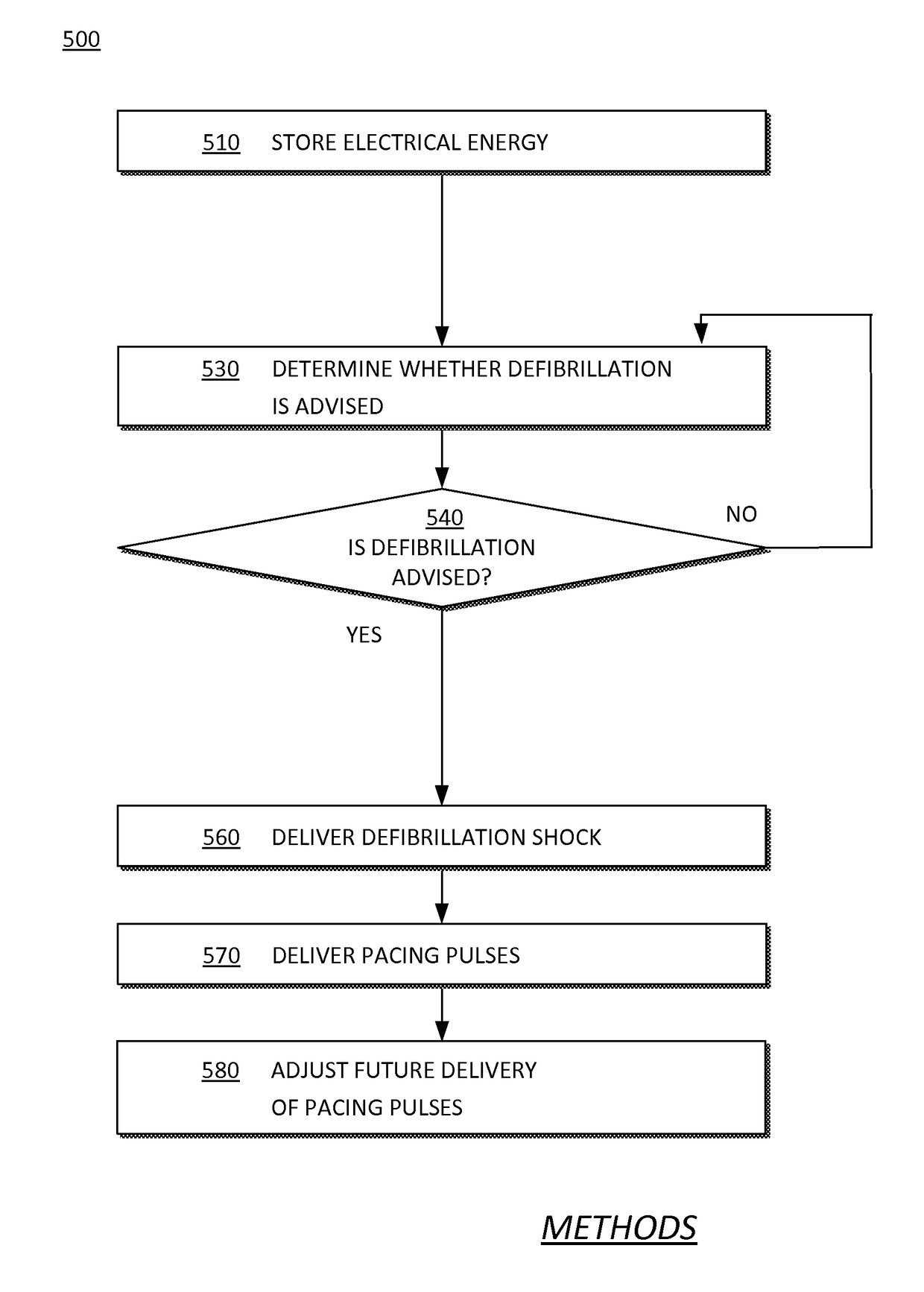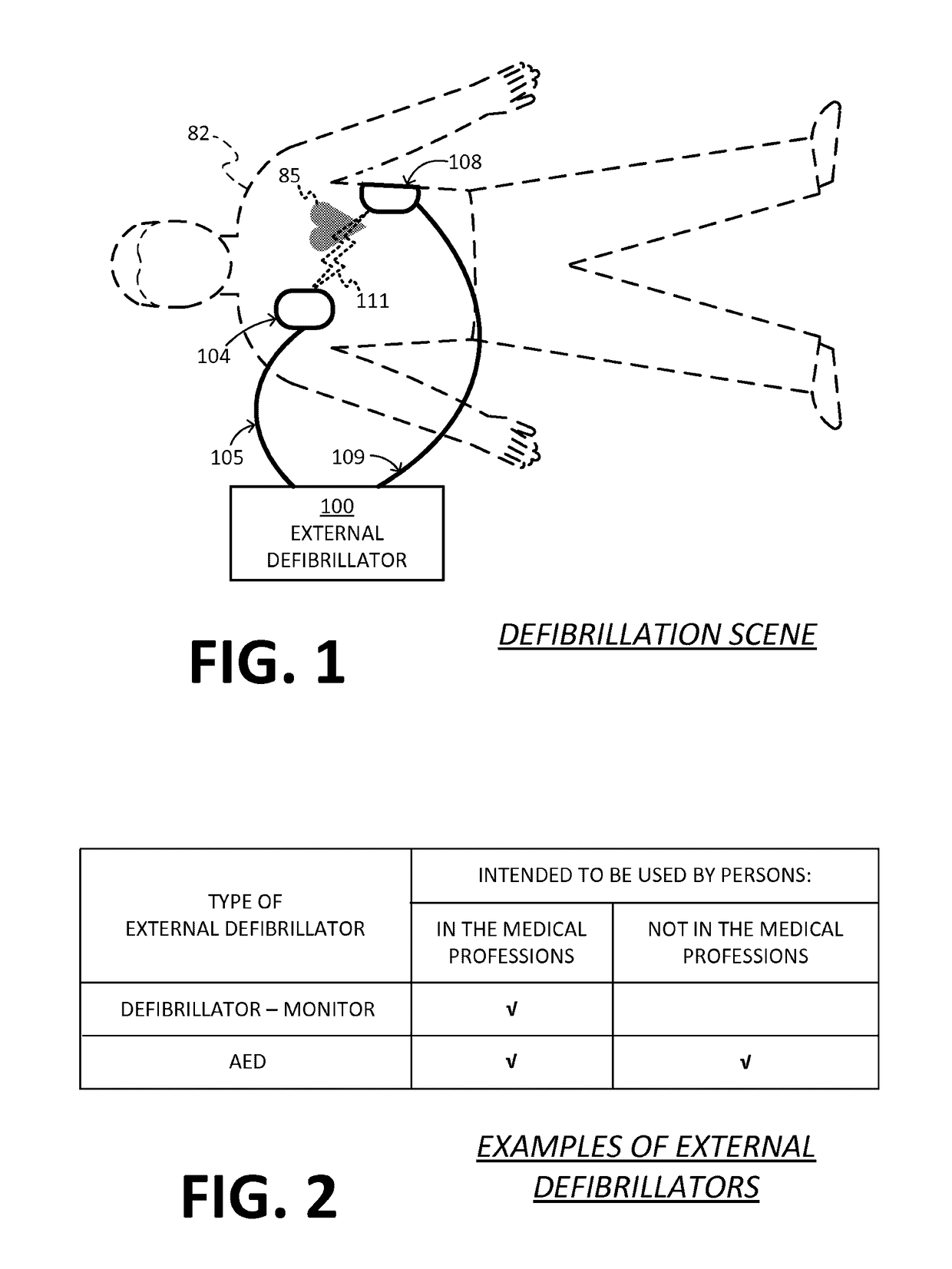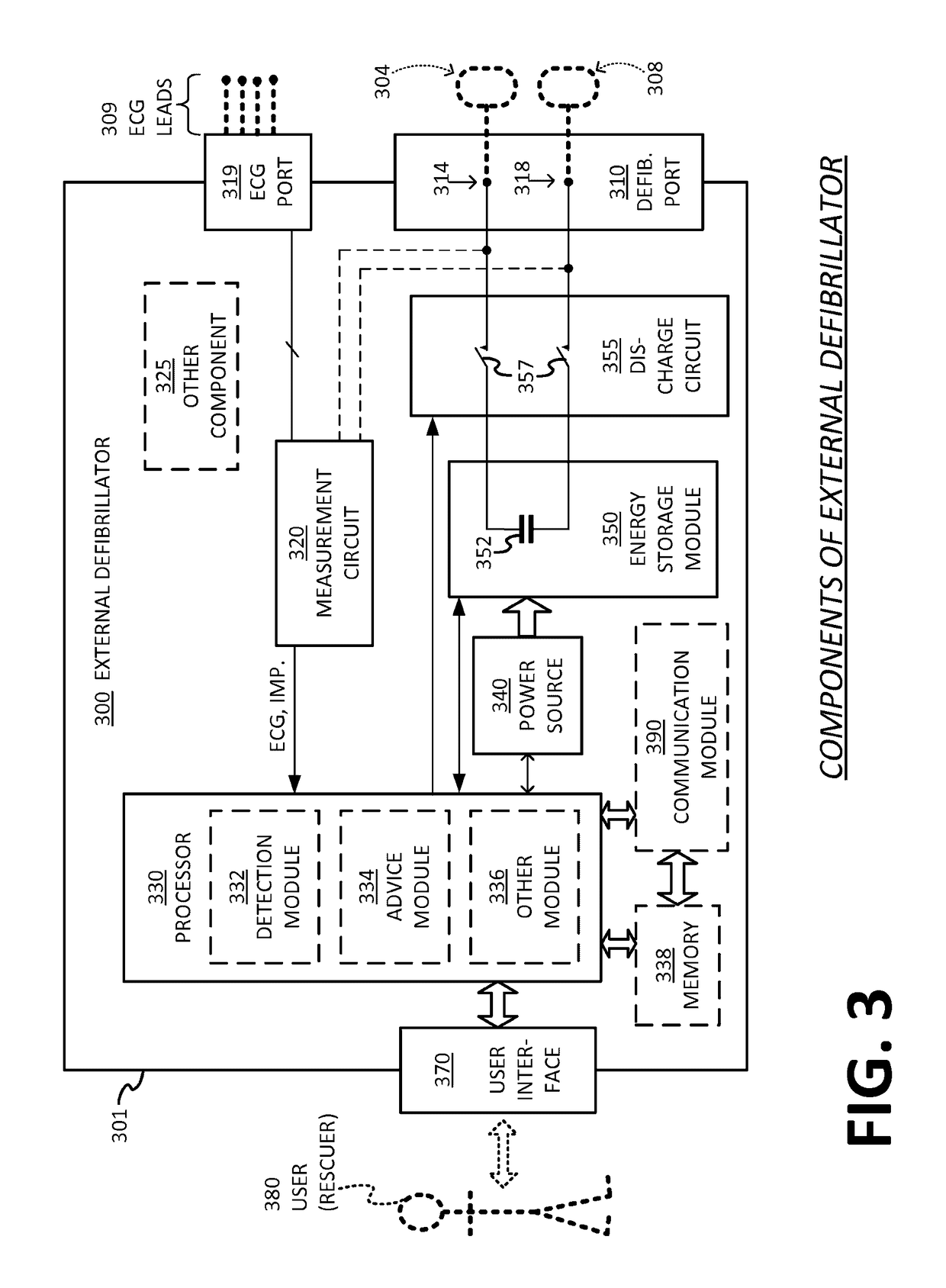External defibrillation with automatic post-shock Anti-tachycardia (APSAT) pacing based on pre-shock ECG
- Summary
- Abstract
- Description
- Claims
- Application Information
AI Technical Summary
Benefits of technology
Problems solved by technology
Method used
Image
Examples
example timing
Diagrams
[0050]FIG. 4 is a combination of example timing diagrams for illustrating the timing of a pulse sequence according to embodiments. Therapy 111 is shown along a time axis, in terms of icons that represent delivery of energy to the patient as therapy. It will be understood that, in some embodiments, the energy of therapy 111 is delivered automatically, in response to determining that defibrillation is advised for the patient. In other embodiments, the energy is delivered responsive to a user operating the user interface 370; in those embodiments, the user would be informed that defibrillation is advised, or to activate a control, or both. In some embodiments, the energy delivered as therapy is delivered in different portions. Often a first portion is a defibrillation shock, and often a second portion is one or more pacing pulses, as described in more detail below.
[0051]Therapy 111 includes energy delivered as a defibrillation shock 448. Defibrillation shock 448 can be delivere...
PUM
 Login to View More
Login to View More Abstract
Description
Claims
Application Information
 Login to View More
Login to View More - R&D
- Intellectual Property
- Life Sciences
- Materials
- Tech Scout
- Unparalleled Data Quality
- Higher Quality Content
- 60% Fewer Hallucinations
Browse by: Latest US Patents, China's latest patents, Technical Efficacy Thesaurus, Application Domain, Technology Topic, Popular Technical Reports.
© 2025 PatSnap. All rights reserved.Legal|Privacy policy|Modern Slavery Act Transparency Statement|Sitemap|About US| Contact US: help@patsnap.com



